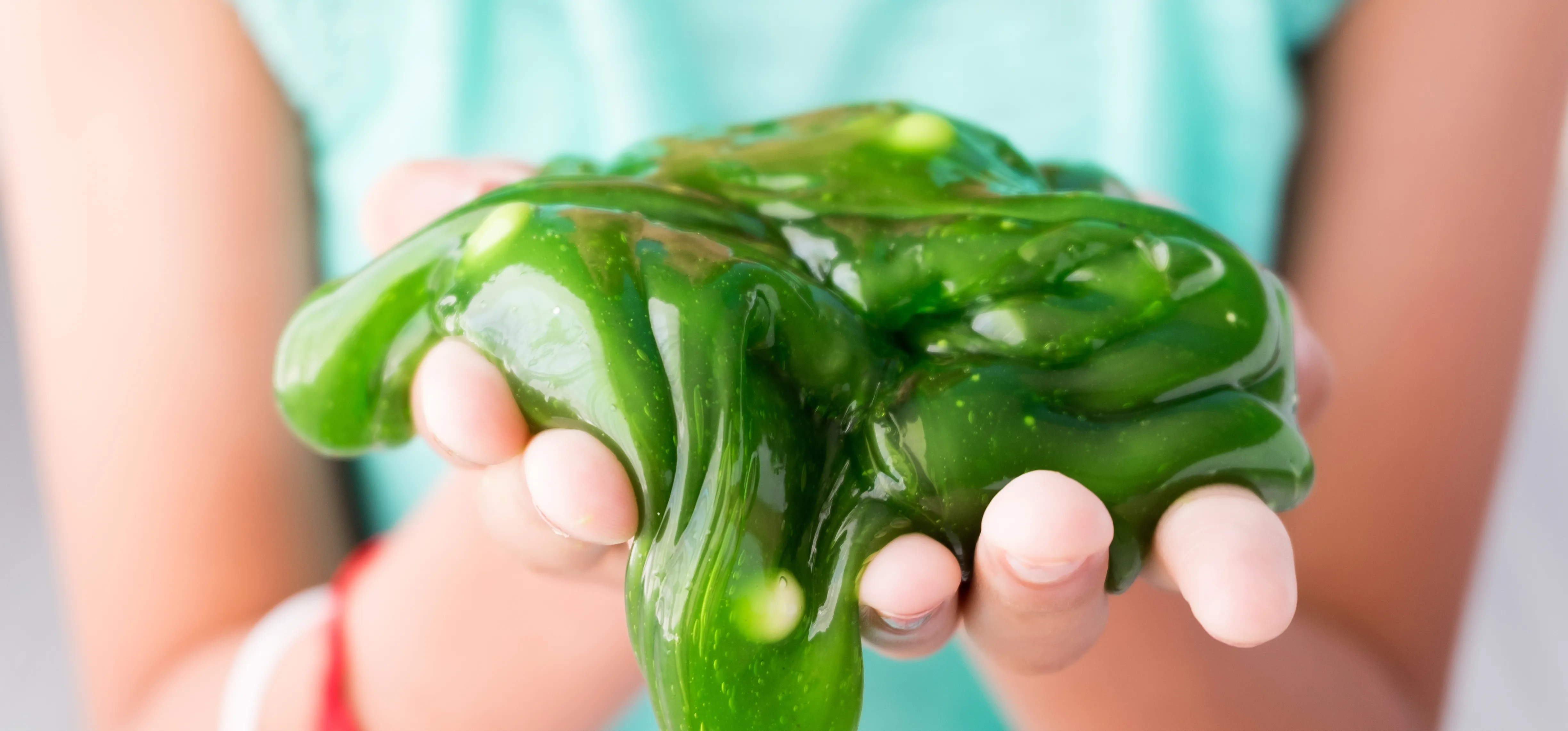Slime is a favorite hands-on activity that doubles as a fun way to explore basic chemistry. In this guide, you'll learn three different slime recipes, each featured in its own Science Bob video and using a unique method — from simple starch slime to advanced polymer chemistry.
Classic slime with liquid starch
This is the easiest and most kid-friendly slime. Just mix equal parts glue, water, and liquid starch to create gooey fun in minutes.
What you'll need
¼ cup of white craft glue (like Elmer's)
¼ cup of water
¼ cup of liquid starch (used for laundry)
Food coloring (optional)
Mixing bowl and spoon
A zip-top bag or an airtight container for storage
Instructions
Pour the glue into the mixing bowl.
Add the water and stir until well combined.
Add food coloring, if using. About six drops should give you a nice, vibrant color.
Pour in the liquid starch and stir again.
As you stir, the mixture will thicken and start to form slime. Keep mixing until it begins to pull away from the sides of the bowl.
Take the slime out of the bowl and knead it with your hands. It will become stretchier and less sticky the more you play with it.
When you're done playing, store the slime in a sealed zip bag to keep it from drying out.
How does it work?
The glue you used is a liquid polymer, which means its molecules are arranged in long chains. When you add liquid starch, it acts as a cross-linker, connecting those chains and turning the glue into a more solid, stretchy substance. This is an excellent example of how polymers work and how chemistry can change the properties of everyday materials.
Try and experiment!
This basic recipe is a demonstration. If you'd like to turn it into a real science experiment, try answering these questions:
What happens if you change the amount of glue or water?
Do different brands of glue create different textures?
How does adjusting the ratio of ingredients affect stretchiness or stickiness?
What happens when the slime is stored in a sealed bag vs. left out in the open?
Borax-based slime
This version swaps the starch for a borax solution — another common method for making slime. However, borax should be handled carefully and kept away from young children without supervision.
What you'll need
¼ cup white craft glue
2 tablespoons water
4 tablespoons borax solution (borax mixed into warm water)
Food coloring (optional)
Mixing bowl and spoon
Instructions
Stir the glue and water together in a bowl.
Add food coloring if you like.
Slowly pour in the borax solution while stirring.
Once it thickens, knead it with your hands to finish the texture.
Store in a zip bag when not in use.
How does it work?
Borax contains borate ions that link the glue's polymers together, creating a stretchy gel. It acts as a powerful cross-linking agent, but in stronger concentrations than starch.
Try and experiment!
This basic recipe is a demonstration. If you'd like to turn it into a real science experiment, try answering these questions:
Compare borax-based slime with the starch version — what's different?
What happens if you add the borax solution faster or slower?
Try colored glue instead of food coloring for a twist.
Slime with polyvinyl alcohol
This is the most science-heavy of the three. It uses a special chemical called polyvinyl alcohol (PVA), which is found in products like sponges and sometimes online through science suppliers.
What you'll need
Borax solution (as in Method 2)
Spoon and mixing bowl
Instructions
Pour your PVA solution into a mixing bowl.
Slowly add about 50 ml (3–4 tablespoons) of borax solution.
Stir until it thickens into slime.
Knead and stretch it — note the firmer, rubbery feel.
Store it sealed to keep it usable longer.
How does it work?
This is a classic polymer reaction: PVA molecules are already in long chains, and the borax solution cross-links them into a semi-solid material. It creates a more durable, rubbery slime that is ideal for science class demos.
Try and experiment!
This basic recipe is a demonstration. If you'd like to turn it into a real science experiment, try answering these questions:
Try changing the amount of borax to make it stretchier or stiffer.
Use measuring tools to be precise and track different outcomes.
Time how long the slime lasts in storage vs. other types.
Each method teaches something new about how polymers, cross-linking, and chemical reactions work, and all of them end in satisfying, kid-approved slime.
Want to take it further? Try mixing recipes or layering colors to see what happens. And don't forget to wear an old shirt — science can get messy!
Don't Miss: Make Slime Without Borax: 5 Easy Recipes for Gooey Homemade Ooze
























Comments
Be the first, drop a comment!